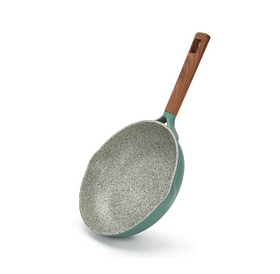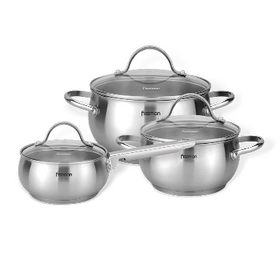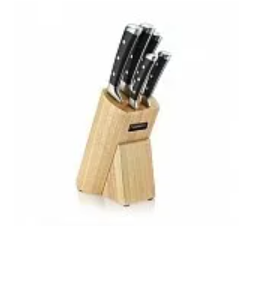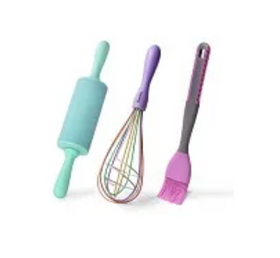
Things About Lebanese Mezze You Probably Don’t Know
Lebanese cuisine is one of the most delicious and diverse in the world. With influences from the Mediterranean, the Middle East, and North Africa, Lebanese food is a beautiful blend of flavors that can be enjoyed all year round.
But there's more to the food than just delicious dishes. Many unique practices and traditions surround the preparation and consumption of this amazing cuisine. Here are things about Lebanese mezze that you probably don't know!
What is Mezze?
Mezze is a small dish served alongside a main course and can be eaten throughout the meal.
It consists of many different types of food but usually includes vegetables, fruits, nuts, and seeds. In addition to these foods, mezze also usually includes cheese, meat, or fish dishes, as well as dips like hummus and baba ghanoush.
There are many different types of mezze, but they all share some common characteristics:
- They're bite-sized and meant to be eaten with your fingers.
- They're served cold or at room temperature, so you can eat them throughout your meal without waiting for them to be heated up after refrigeration.
- They're meant to complement other foods rather than compete with them for attention (i.e., you wouldn't order both hummus and baba ghanoush on the same plate).
The word "mezze" comes from Arabic, meaning "to drink." The Arabic root word for this means "taste," so when combined, it translates into "that which tastes good."
Its Origins
Mezze is an ancient tradition in Lebanon, dating back thousands of years. Some historians believe that mezze was invented by ancient Phoenicians living along present-day Lebanon's coast.
They had no written language, so they used visual symbols instead—and those symbols eventually became part of their culture and traditions. Both Greeks and Romans were known to have loved mezze as well; they adopted it into their own cultures around 2000 BC. They liked it so much that they took it back home with them!
Mezze is served almost every meal in Lebanon, especially during Ramadan and other religious holidays. Lebanese cuisine is renowned for its large variety of mezze recipes, with each region having its specialties.
In addition to being served as an appetizer, mezze can also be served as a side dish or main dish, depending on what type of mezze you are serving.
The Diversification of a Tradition
It’s no secret that mezze is a popular part of Lebanese cuisine. From its humble beginnings as an outlet for leftover food, mezze has evolved into a full-fledged culinary tradition with its customs and practices.
The history of the custom is relatively short, but it has been the subject of much debate among historians. Some scholars believe that the practice began in ancient times. This happened when people would bring together their leftovers from the previous day’s meals to create something new for the next day. Others say that this practice was born out of necessity—as many Lebanese homes were too small to store food properly, they were forced to eat their leftovers every day until they had enough to make something new.
Regardless of how it started, we know that over time, people began to develop their techniques for combining these ingredients in new ways. Some would add spices or other ingredients to enhance or change the texture or flavor profile. Others would garnish their creations with various garnishes like nuts or fruit slices. Still, others would serve theirs on top of bread instead of eating it by itself.
It Can Be Served Hot or Cold
The dish can be eaten cold or hot. In fact, the word "mezze" comes from the Arabic word for "cold." But these days, most people eat their Lebanese mezze hot.
The reason? Because it's delicious.
Hot mezze is usually served with a selection of dips and sauces, which are great for dipping bread into. Some people like to use pita bread for this purpose, but you can also get Lebanese-style pizza dough (known as khobez) in stores that sell Middle Eastern food.
It is Never Served alone.
Mezze is not a standalone dish; it is served with other dishes. It is the first to be brought out at a Lebanese table, usually accompanied by grilled or baked bread.
The most popular mezze dishes are hummus and tabbouleh; they are eaten with fresh-baked pita bread or other flatbreads.
Mezze For Non-vegetarians
If you’re not vegetarian or vegan, you probably love mezze. It’s a great way to sample different flavors without filling up too quickly. Traditional Lebanese mezze includes:
- Hummus (chickpea paste).
- Baba ghanoush (eggplant dip).
- Tabbouleh (parsley salad).
- Fattoush (bread salad).
- Labneh (thick yogurt).
- Olives.
- Stuffed grape leaves.
- Pickled vegetables.
- Other delights.
You can add meat or pita bread if you like—but most people eat their fill of the amazing flavors on offer!
Mezze For Vegetarians or Vegans
If you're a vegan, Lebanese mezze can seem like a challenge. But don't let that stop you. There are plenty of ways to navigate this delicious cuisine with ease.
You can get creative with your dips.
One of the best ways to enjoy Lebanese food is by making your dips at home. Hummus, baba ghanoush, tabbouleh. All these classic Lebanese dishes can be made vegetarian-friendly by substituting ingredients like feta cheese with tofu or tempeh. These substitutes will help retain the flavor and texture of traditional recipes while providing plenty of protein for vegetarians and vegans.
The salad plates aren't just for salad!
If you've ever gone out to eat at a Lebanese restaurant, you may have noticed that the table comes with little plates filled with different types of hummus and other spreads (we call them mezze). But many people don't realize that you can use these small plates on your own when preparing meals at home. Just add some veggies and make them into little sandwiches using pita bread instead of regular bread. You'll be amazed at how much flavor comes through in this simple dish!
Takeaway
Lebanese Mezze is a special kind of food. It's not just about the taste but the experience. The Lebanese are proud of their culture and traditions, which shows in how they eat mezze.
Mezze is an array of small dishes served at the beginning of every meal as part of an appetizer course. They're meant to be shared with family or friends and enjoyed together over conversation—a time for bonding and laughter.
But there's more to mezze than just sharing a meal with loved ones. Lebanese mezze is also a way to welcome guests into your home, so when you serve it in your own home, it's not just good manners; it's tradition!
What is you favourite dish?
Sources:
https://zaitoune.com.au/news/6-lebanese-food-facts-you-might-not-know
https://www.sahrabytheriver.com.au/blog/why-lebanese-cuisine-is-renowned-all-around-the-world/



































Leave a comment